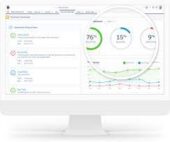Understanding Data Analytics Consent and Consent Management
Why Consent Management is Crucial
Consent Management Analytics and Data Quality. With laws like GDPR and CCPA imposing stringent data processing requirements, an effective consent management strategy is essential for compliance and building user trust. A Consent Management Platform (CMP) simplifies this process, offering comprehensive solutions for managing consent and user preferences. Emerging trends such as AI, blockchain, and browser-based preference signals like Global Privacy Control (GPC) are shaping the future of consent management, pushing for more dynamic, user-centric models that prioritize control and privacy.
What is Data Analytics Consent?
Data analytics consent involves obtaining and managing individuals’ permission to collect, store, and use their personal data for specific purposes. With an entire generation accustomed to constant data collection and analysis, consent management has become a vital component of digital operations. This discipline focuses on the practices and processes organizations use to handle and record user consent for data collection and processing.
The Role of a Consent Management Platform (CMP)
A CMP is a software tool designed to help websites comply with cookie regulations. It plays a crucial role by:
- Managing Consent Collection: Facilitates obtaining user consent in a compliant and user-friendly manner.
- Customizing Consent Experiences: Offers customizable interfaces for different regions, devices, and user preferences.
- Integrating Across Platforms: Seamlessly works with various websites, apps, and systems for consistent consent management.
- Handling Client-Side and Backend Consent: Manages user consent from the front-end interface to backend data processing.
- Complying with Regional Regulations: Adapts to data protection laws like GDPR and CCPA, ensuring regional compliance.
- Tracking and Recording Consent: Maintains detailed records of user consents, including their granting, modification, and withdrawal.
- Supporting Global Privacy Control: Recognizes and honors browser-based preference signals like GPC.
- Offering Reporting and Analytics: Provides enterprise-level reporting and analytics for consent data.
- Facilitating Easy Consent Withdrawal: Ensures users can easily withdraw or modify their consent, respecting their data rights.
How is Consent Managed in Data Privacy?
Consent management in data privacy is a procedural approach ensuring compliance by informing users about data collection and usage practices. An effective process logs and tracks consent, enhancing data quality and relevance. Users who actively consent to data use are more likely to provide accurate and relevant information, which is vital for informed business decisions and personalized services.
Why Consent Management is Essential for Data Protection Compliance
Compliance with data protection regulations requires explicit consent for data processing, especially for sensitive data. Consent management:
- Establishes Trust: Gaining explicit consent builds trust with users.
- Avoids Legal and Financial Consequences: Helps avoid penalties for non-compliance.
- Empowers Users: Gives users control over their data.
- Enhances Data Quality: Ensures the collection of accurate and relevant data.
- Reduces Data Management Complexities: Simplifies compliance across different jurisdictions.
Informed Consent and Data Strategy
Informed consent is crucial for ensuring participants voluntarily engage in data collection and understand its purpose. Implementing a consent management system involves:
- Collecting, Storing, and Processing Consent: Compliance verification is based on stored consent information.
- Ensuring Clear Communication: Inform users about data requirements and usage in understandable language.
- Providing Granular Control: Allow users to specify data sharing preferences, building trust and encouraging more informed consent.
Explicit vs. Implicit Consent
- Implicit Consent: Assumes user consent based on actions, such as signing up for a service. This approach is less reliable as users may not fully understand what they are consenting to.
- Explicit Consent: Clearly informs users about data collection, storage, duration, and usage. Users must take affirmative action (e.g., checking a box) to confirm consent, which is then recorded. This method is more transparent and helps establish trust.
The Future of Consent Management
Emerging trends like AI, blockchain, and GPC are influencing the evolution of consent management, necessitating more dynamic, user-centric models that prioritize user control and privacy. Businesses must refine their data strategies for increased transparency and prepare for a future without third-party cookies, ensuring that user consent is respected in all marketing activities.
Content updated February 2024.













